After seeing how well AEM’s air intakes worked on the new Subaru STI and the new turbo FA20 powered WRX, we couldn’t resist another AEM + Subie dyno test, this time using a 2015 Forester XT. And once again Travis from Snail Performance is our official dyno tester. He’s a long-time friend of ours and we really trust his tuning and his professionalism when evaluating parts. He’s like our Texas-born, Cali-living brother from another mother.
The nice thing about the shiny, new FXT Travis used for this test is that it was 100% stock, so the results show you exactly what bolting up AEM’s intake system does when combined with a Grimmspeed 3-port electronic boost control solenoid and a Cobb AccessPort V3 pro tune from a Plus Key Wizard like Travis. As you’ll soon see, this $1,000 package of goodies provides some seriously impressive results.
Of course before testing these parts on the dyno they needed to be installed. The AEM intake system uses a mandrel bent aluminum air intake tube that features smooth radius bends and a powder coated finish in an attractive Charcoal Gray colour.
The AEM Dryflow air filter is positioned more or less where the stock airbox used to live, in the front passenger side corner of the engine bay. With the help of the Black powder coated heat shield, AEM has done their homework to make sure the filter is sucking in the coolest air possible. The kit also includes all the hardware and instructions needed for a quick and easy installation, plus it comes with a Lifetime Limited Warranty, just like all of AEM’s kits.
When we asked George Hsieh from AEM why they didn’t integrate the factory air scoop into the shield like they did with the WRX FA20 DIT kit, he had this to say: “We did entertain the idea of setting up the heat shield just like the WRX to take advantage of the pressurized air feed. However, we decided not to go with it due to the scoop’s location limiting the size of the air filter we can use with the kit. In addition, we’d have to ask customers to cut the scoop to have it properly interface with the heat shield. We have performed temperature testing via thermocouples and the area where the filter resides gets plenty of fresh air through the lower bumper openings, utilizing a semi closed heat shield we were able to keep the fresh air supply isolated to the air filter. The location of the MAF also plays an important role. By placing the MAF lower in the tube ensures accurate air flow and temp signal pick up for consistent gains.”
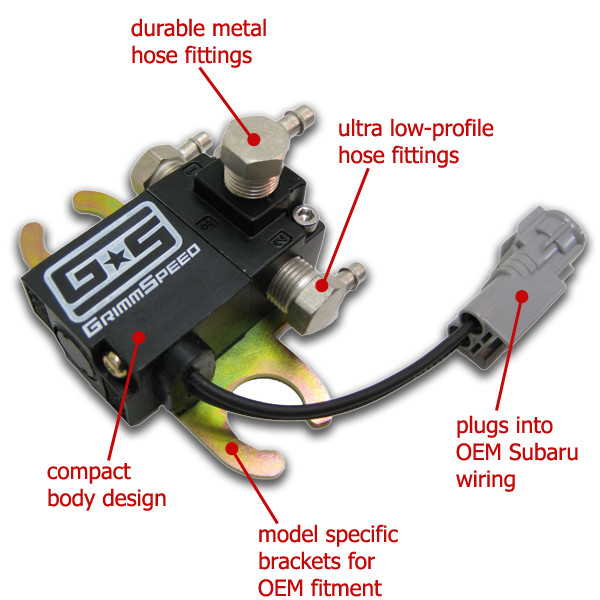
The Grimmspeed EBC solenoid uses a 3-port design rather than the OE 2-port, which gives Travis higher resolution boost control, aiding spool up and providing tighter control of boost levels across the entire powerband. As you can see, it includes a Plug & Play harness so it just plugs right into the factory harness, is voltage matched to work seamlessly with the factory ECU, and the mounting bracket means it’s literally a 10 minute install.
The Cobb AccessPort V3 is even easier to install, since all you do is plug it into your car’s OBD port. So ya, literally a 30-second install, and the control this cell phone sized device gives you is impressive, since it allows pro tuners like Travis to completely remap fuel and ignition timing as well as fine-tune boost pressure, cam timing and much more, but it’s also user-friendly enough for non pro tuners to upload Cobb’s Off-The-Shelf tunes or even use it as a diagnostic tool whenever a CEL pops up. And thanks to its full colour display, it’s also a very handy and customizable gauge for displaying all sorts of engine data, from air/fuel ratio to the temps and pressures of your choosing.
With the installation work complete, Travis strapped the FXT to his Mustang chassis dyno and spun the Subie’s turbocharged FA20 to redline a few times while dialling in the tune.
Bam! As you can see, this Fozzie XT saw huge gains in horsepower and torque, with peak torque jumped from 218 to 287 ft-lbs and area under the curve torque gains are massive right across the entire powerband. Peak horsepower improved tremendously as well, going from a baseline of 209-whp at around 5,600 RPM to 244-whp at around 5,400 RPM and gains are even bigger in the mid-range. This thing just went from Soccer Mom Subie to Sleeper STI Status in a hurry!
Part of the 69 ft-lb and 35-whp peak gains can be attributed to the 3-4 extra PSI of boost pressure the FA20 is seeing after Travis’ tune, as depicted by the green lines of the dyno chart. The dotted green line for the stock baseline shows a fair bit of change in boost pressure across the rev range, while the Grimmspeed EBC and Snail tune have boost under much better control as seen with the smoothness of the solid green line.
Travis’ tune has smoothed out and richened up the air/fuel ratio, too, which no doubt contributes to its improved power output, especially below 4,700 RPM where the factory tune is surprisingly lean for a turbo car. Not dangerously lean by any means, but definitely a factory tune with fuel economy in mind more so than peak power production.
AEM’s far less restrictive air intake has also contributed significantly to the overall gains, their advertised 23-whp and 18-wtq accounting for most of the gains in top end horsepower and about 20% of the torque gains, too. Plus, as the above comparison of ambient air temps vs intake air temps show, the AEM intake system does a remarkably good job of sheilding the air filter from hot engine bay air (made hotter by the turbo system) and feeding the combustion chambers a cool, dense air charge that’s less than 5-degrees warmer than ambient at low engine speeds and less than 2-degrees warmer than ambient from 4,400 RPM to redline.
In the end, the owner of this stealthy looking ’15 FXT now has STI-like power production for an investment of around $1,000 ($275 for the AEM intake, $110 for the Grimmspeed EBC solenoid, and $650 for the Cobb APV3). That’s some serious bang for the buck in our books, not to mention a great way to surprise the occasional Evo owner once the stoplight turns green.
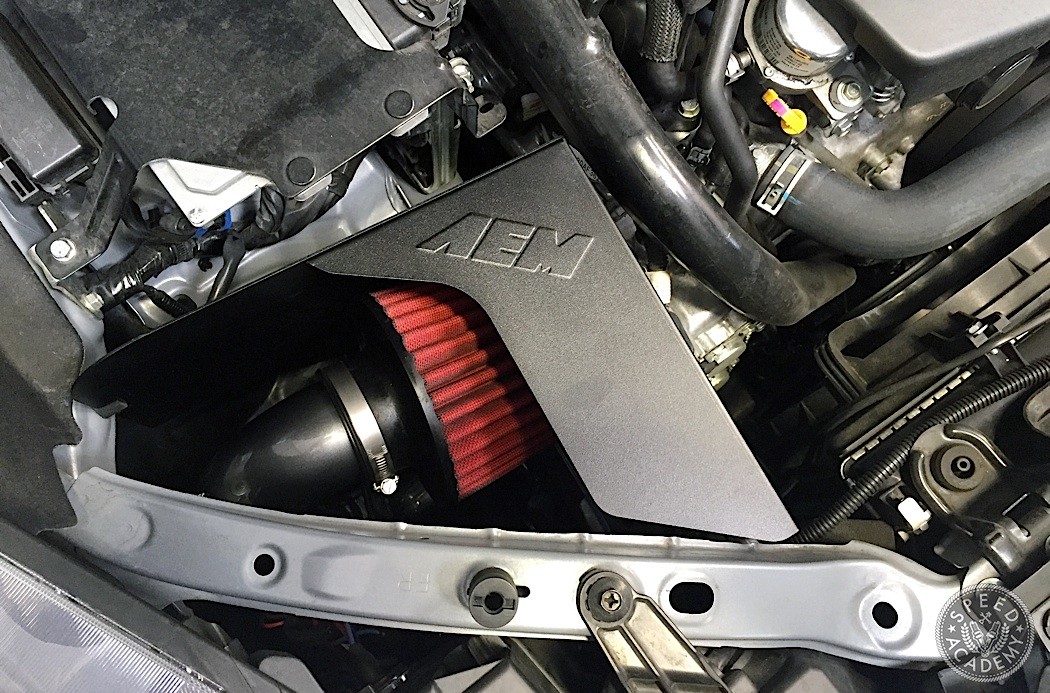
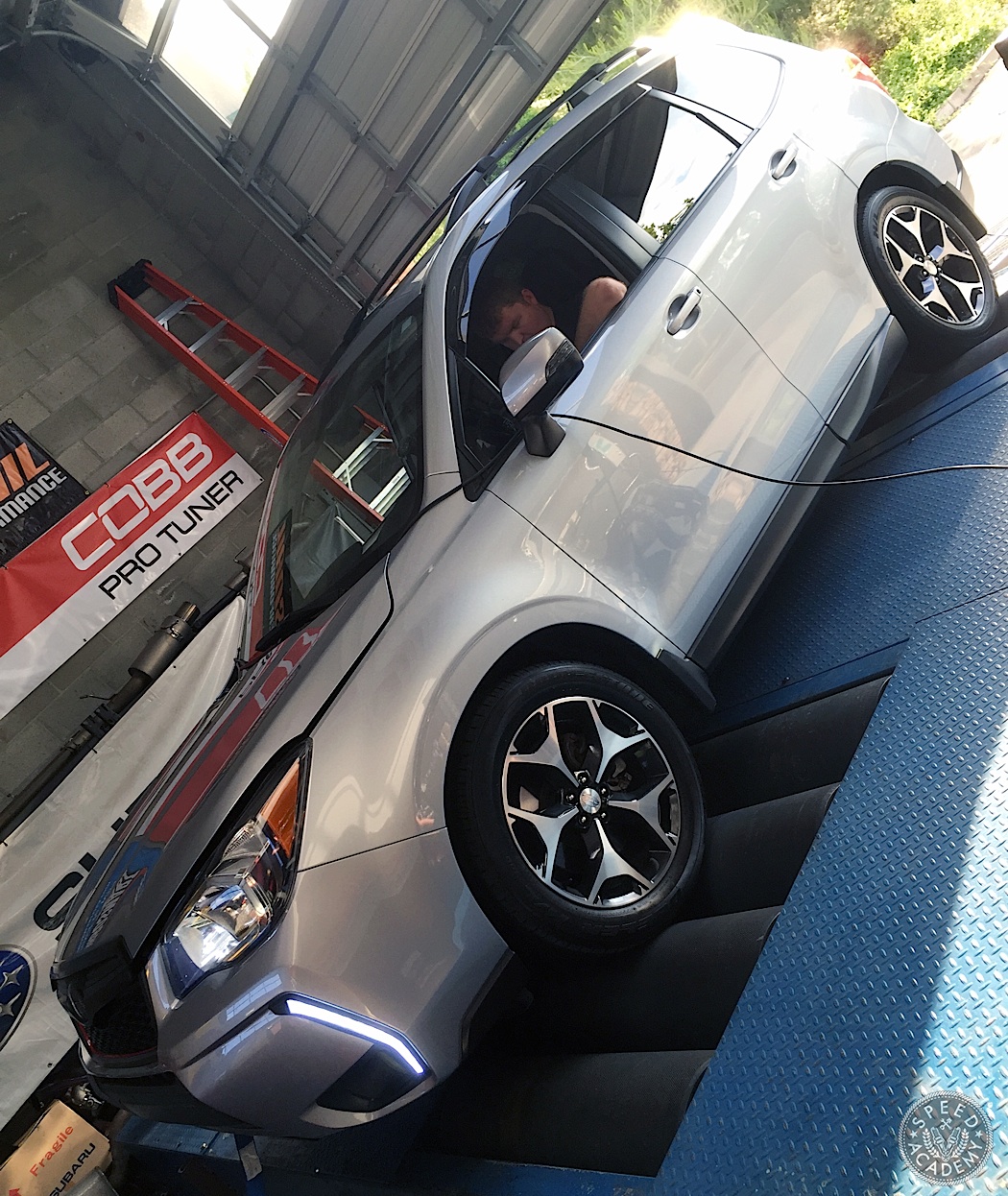

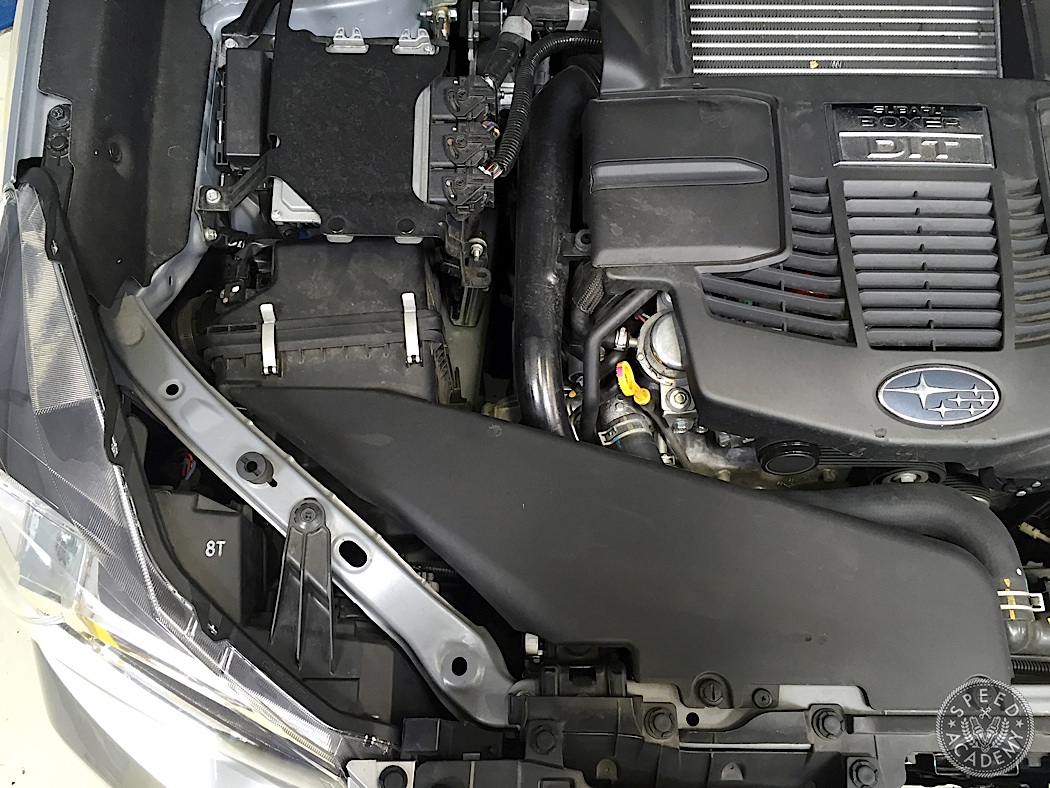
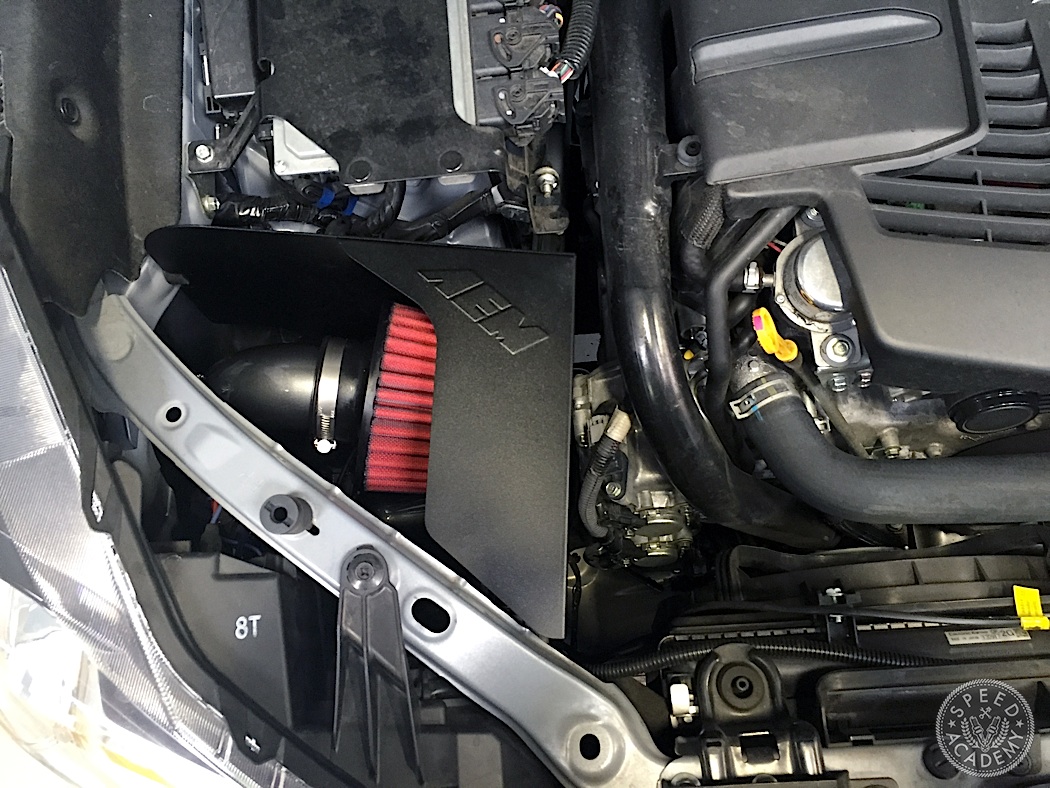

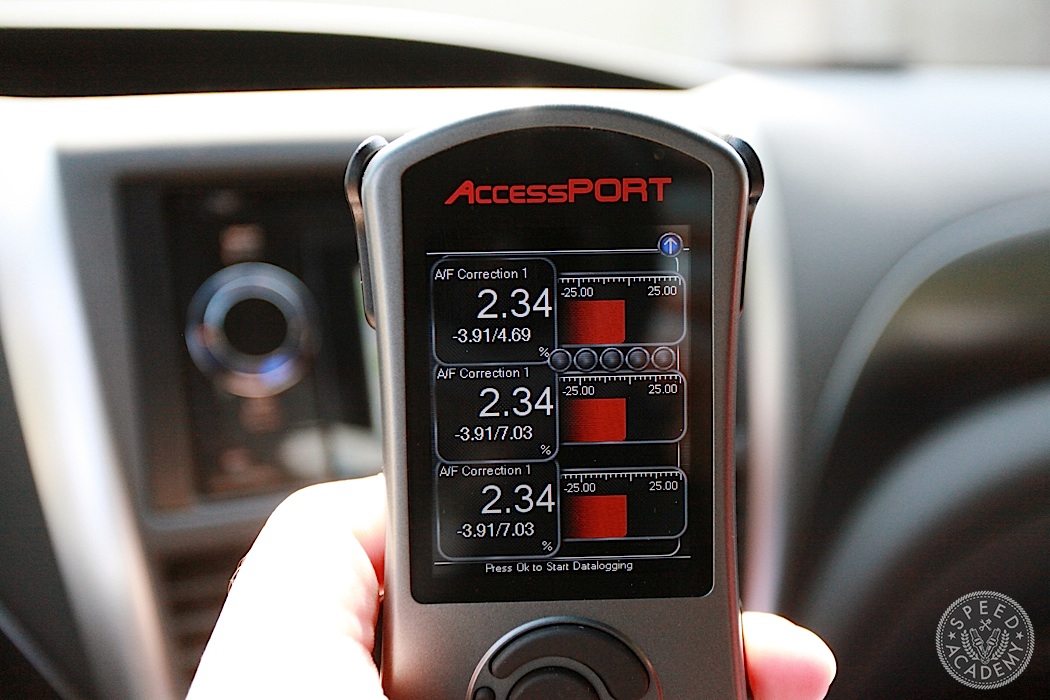
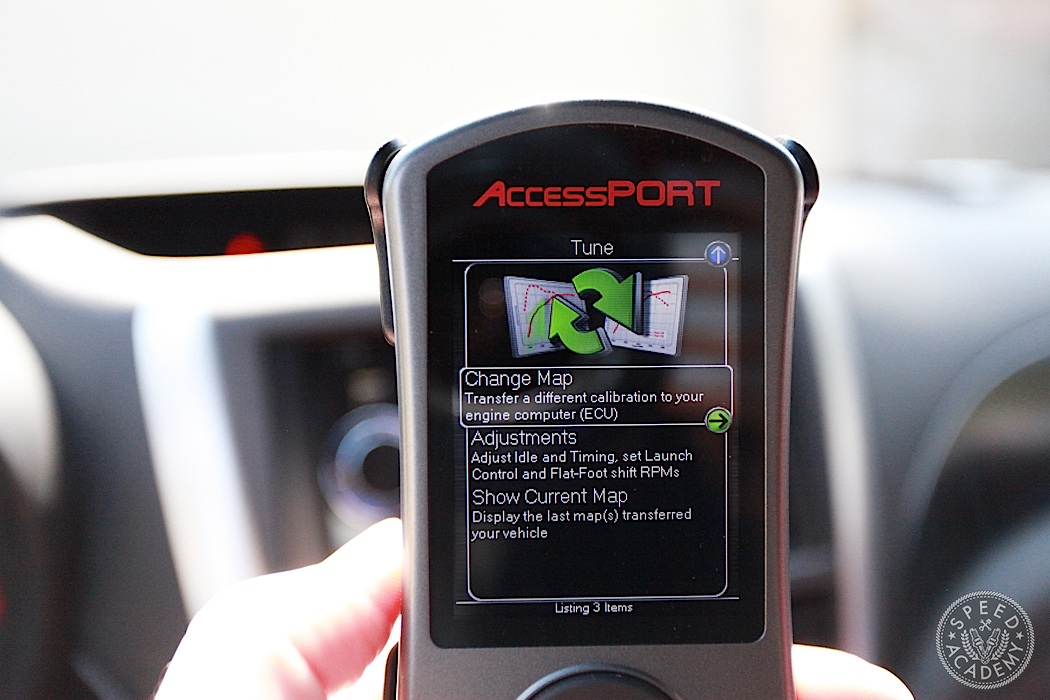
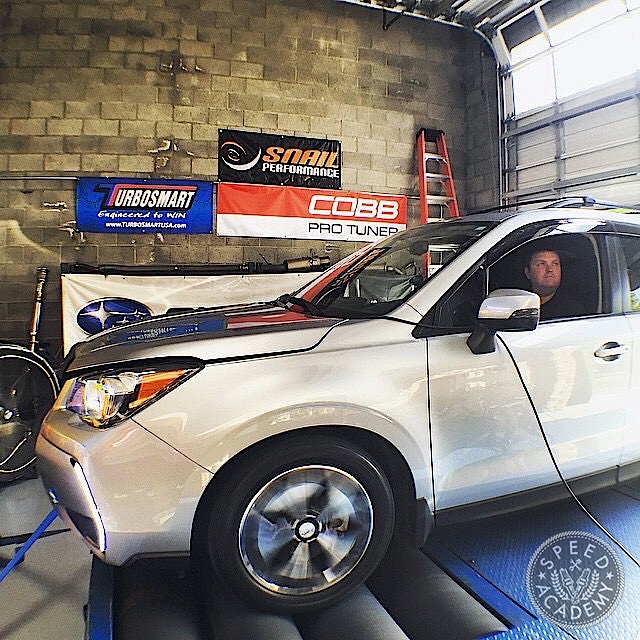
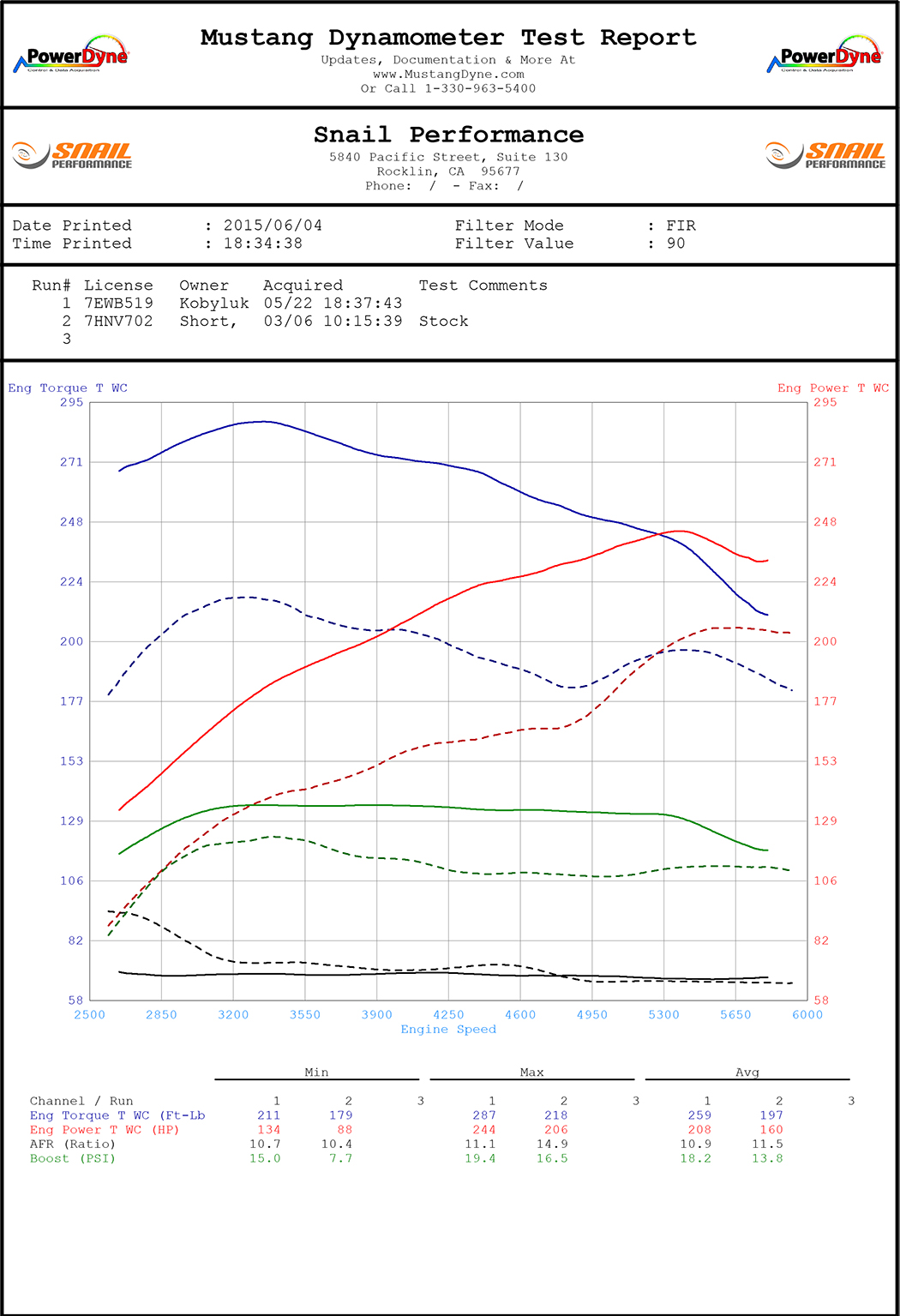
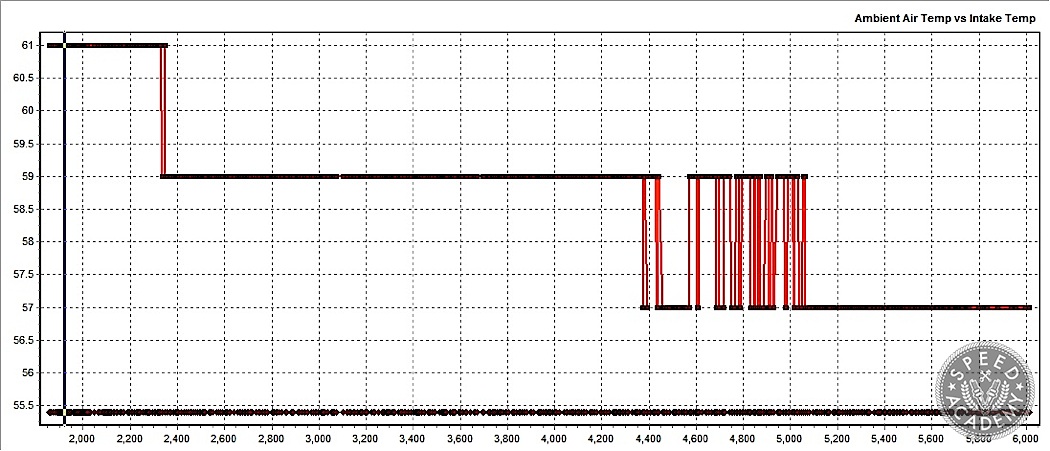

I just finished reading your article and hope you can clarify things for me. The XT specs say it has 250 horsepower and 258 pound-feet of torque. If I read it correctly your dyno test has the stock hp at 206 and stock torque at 218. The after mods hp dyno’d out at 244 and the torque at 287. Are the stock specs wrong or were there diff conditions? What accounts of the discrepancy? Thanks you for your time and attention to this post.
As mentioned the dynometer reads the actual horsepower produced at the wheels not at the engine’s crank. That means there are drivetrain losses factored in (and AWD system tends to draw about 15% of the engines power to operate) so the numbers you see are going to be lower then what the manufacturer quotes.
However, they are more accurate and a better indication of actual road going performance.
Hope that explains it for you.
Dynoed at the wheels not crank
What is the part number on the AEM CAI? I ordered the only option I saw for the SJ (2014 forester – part number 21-742C) and tried to confirm that the CAI would be compatible with a stock tune on my 15 XT since previous correspondence stated that the systems are designed to be a direct bolt on with no programming required. I was told that they do not produce a system for the 15 XT and would not warranty any part of the system or auto if opened. Hard to believe that we are 10 months into 2015 and… Read more »
Hey Andy, The guys over at Snail Performance can probably help you out since we didn’t do this install so perhaps give them a call and hopefully they can get you sorted out!
@RN 250 hp and 258 torque is what the motor itself output before it was put in the car. Meaning measured at the flywheel. the numbers your seeing here after modification is at the wheels. so the lower horsepower number for stock is because of drivetrain loss. Ive calculated about a 17% drivetrain loss, not bad at all for AWD. If the engine was taken out of the car and tested like subaru did, you would probably see 296 hp and 340 trq. That should put these numbers into perspective. Why didnt they test the engine like subaru? well, its… Read more »
@Andy I ordeered and installed the 2014 kit for my 2016 and its a perfect fit. the vehicle is the same.
90 Filter value.. WOW
It goes 0-100 with the default value of 6!
Talk about overly smoothing your graphs
I’d be interested to see what you are hiding, masking and buttering up..
#smokeandmirrors?
Yours truly,
A guy that tunes for a living and owns 2 mustang dynos.
@tuner steve
Yes we filtered the graph to 90 big deal, but here is the same graph filtered at 1 you can check the date stamp. We are not trying to butter anything up just smoothing the data out to make it familiar to the readers that are use to seeing graph smoothing sky high.
Also I have posted the same car with its most current tune running E70 mix with the same mods for your viewing pleasure filter set at 1.
Yours truly,
A guy that also tunes for a living and also owns 2 mustang dynos.
Looks awesome! Do you have a recording of what the car sounds like? I am thinking of the same mods, but don’t want the setup to be loud.
Wonder how much more a full exhaust setup would add too
Just curious if you know how well the CVT transmission is holding up with those maps? I just tuned my 2015 FXT with Harvey from TheBoostCreep with an AEM CAI, Grimmspeed EBCS, Nameless Performance Cat-Back Exhaust and Wavespring Bypass Valve, and Moshimoto Charge Pipe, and my results for what Harvey considered safe for this transmission were 223 whp. I fully trust his advice, but I’m curious to see if it can handle those numbers reliably, that would be awesome!
How’d it go. I’ve got a 17 CVT, stage 1. AEM Intake & E-Tune by Torqued Performance (referred by Harvey). Did the CVT hold up? Have you done more? Satisfied?
You literally could have just tuned a complete stock FXT for 223 whp and wouldn’t have needed to buy any of those parts.
I just got mine tuned By Jarred of PDX tuning. Almost the same bolt ons as yours.(no bpv,charge pipe.) The final#’s 236whp 253wtq. @17psi 92oct. Not bad numbers from base 207/214 I asked for a real safe tune for the CVT. But my MPG took a dump. Prob cause I been flooring it everywhere to see if I feel a difference. If you have your graphs I would like to compare them with mine. IG:intelik808
Can you provide the Cobb maps? 😉
How does the CVT handle the extra horsepower?
bad. chain pressure is adjusted for oem engine toruqe. whatever you exceednengine torque, wathever you reduce the design safety margin and endurance
Cobb V3 access port is a plug and play device or we need a pro-tuner to tune the car.
With all this added power is there concern for the CVT getting eaten alive?
I just took my stock 15XT in for a multi-point inspection and 3K oil change… they found a CVT leak… rear pump… new trans being put in now… fortunately I had the 7yr/100K Subaru Extended Warranty… I am 61 and probably not as rough on my Subie as soe of you, but the CVT gone in 40K seems to be a problem to me. I have been thinking about trying some mods, but I am a bit concerned by the CVT failure on a stock config. Is the Forest CVT much different from the WRX? Do any of the mods… Read more »
Effect on Fuel Economy – what happened to the fuel economy?
I’ve been thinking on this mod, but I just want fuel economy and off the line speed to the speed limit. I’m really looking for efficiency improvements within the safety envelope to prevent early failure and maintenance.
Anybody reading this who did the mods or just the intake and would like to share, that would be great!
Thks
I have catback, ebcs, mishi intake and chargepipe, tgv and egr deletes, gfb bpv and am currently being etuned by ray at turbotek tuning…what specifically would u like to know?
For this 2015 FXT mods :::Cobb ebcs and intake:::: what is the 0-60 time in seconds.
Which model Grimmspeed EBC did you use? The link no longer works and there is nothing listed on the site for 2014+ FXT
Hey Dave,
Do you still have the Cobb Maps for this setup?
I have a 2015 FXT with AEM Cold Air Intake and Invidia q300 catback exhaust, running the Cobb Stage 1 91 Octane Off-the-shelf Map.
Thanks so much!
Nice